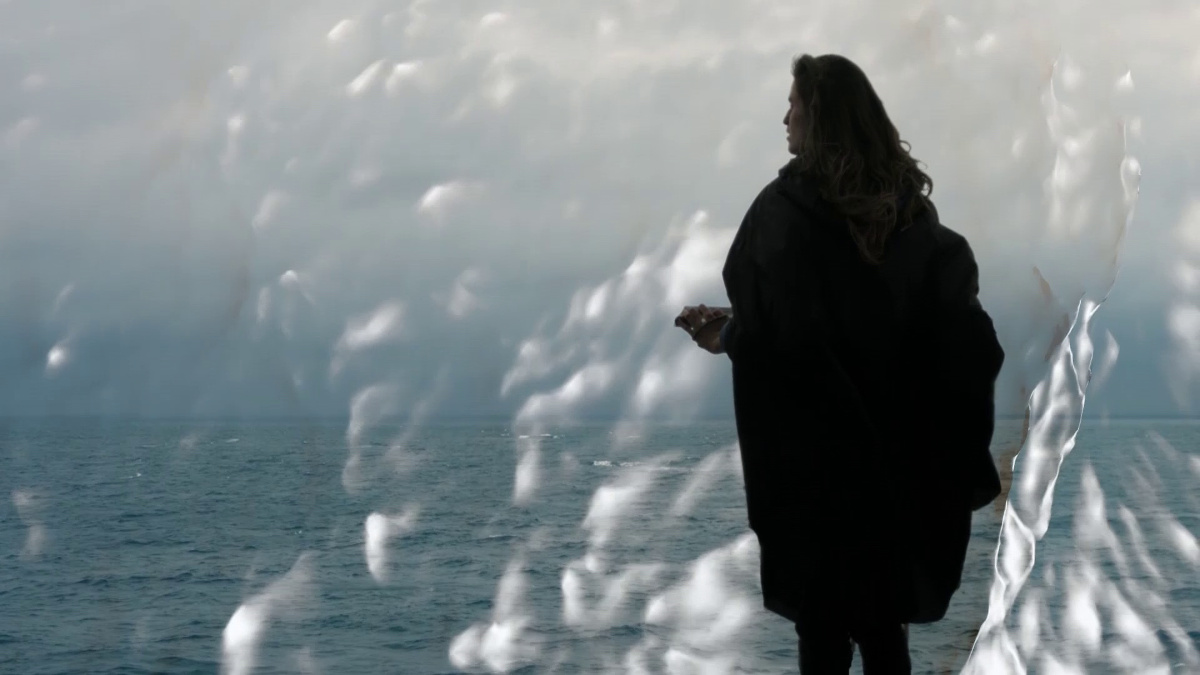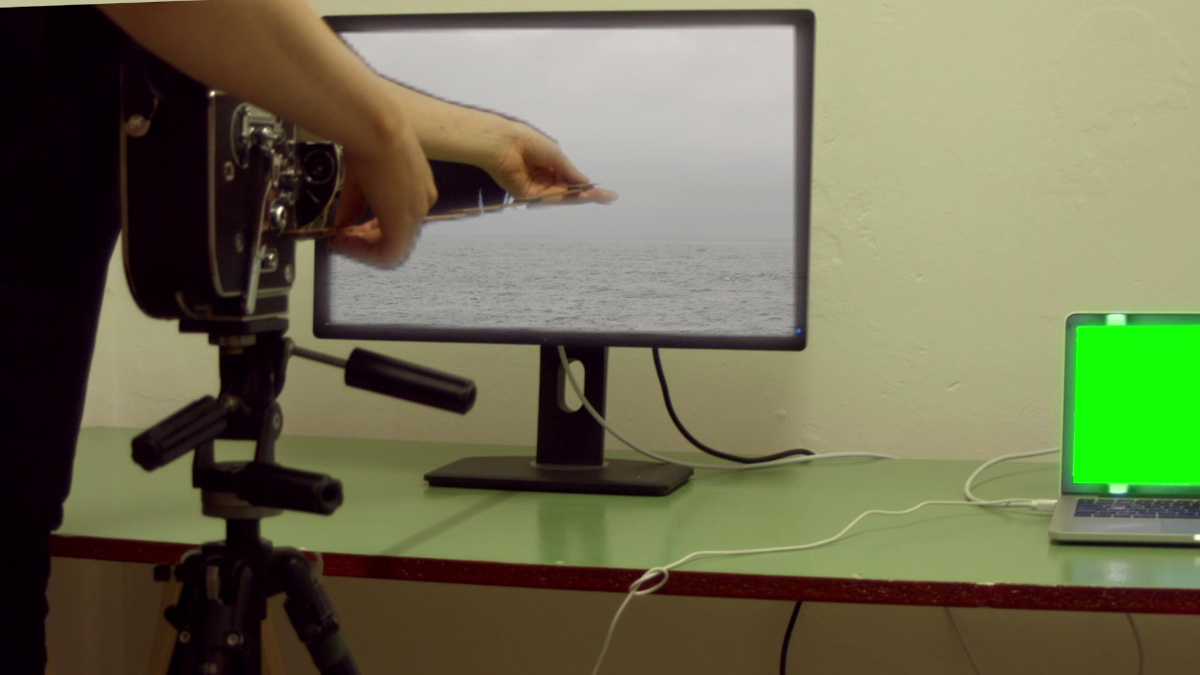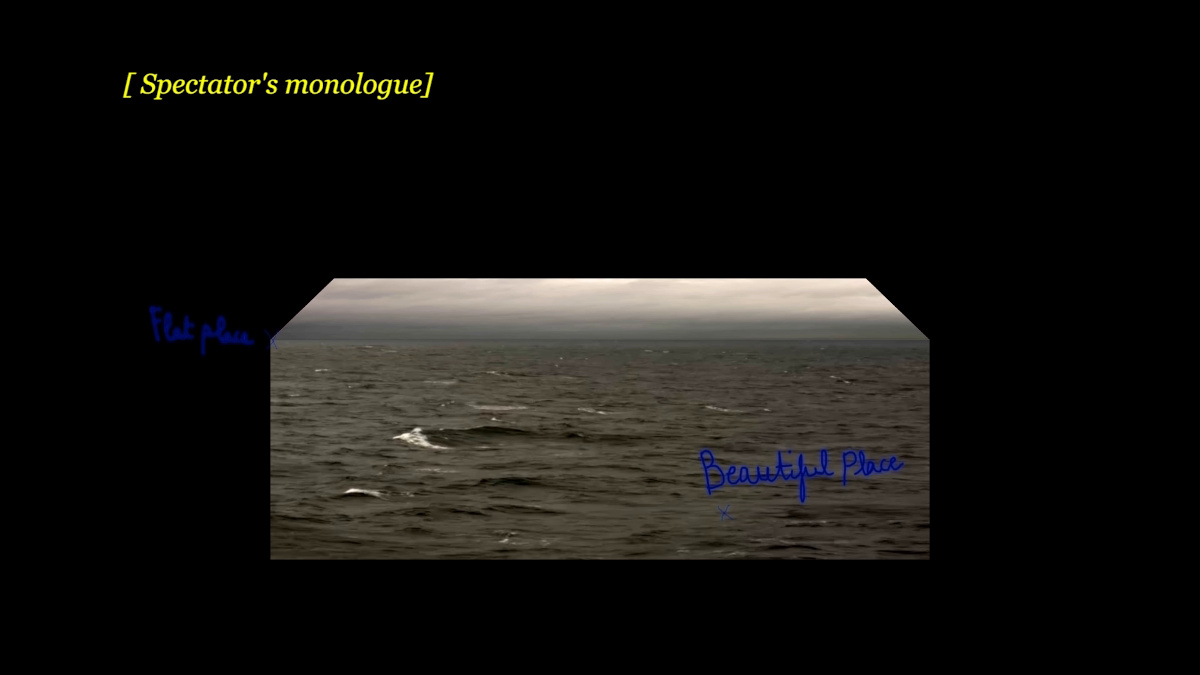en
/english



See the sea of unreachability
Vidéo, 2015.
Time: 00:13:50.
Presented at: Artist’ Moving Image Festival - Filmhouse cinema, Edinburgh, 2015 - Festival International del Ciné IBAFF, Murcia - Traverse Vidéo, Toulouse - SUPERMARKET Stockholm independant art fair - Svarta Huset Telefonplan, Stockholm, 2016.
The "RuckenFigur", literally "the figure from behind" is one of the most frequent motifs in the work of C.D.Friedrich.
This painter includes in the landscape, the viewer of it, so the image would testify to the romantic impossibility of representing the World.
Never in the work of Valentine Siboni, a reference is of the order of the cultural varnish because it is carried by a plastic project of artistic direction. See the Sea of Unreachability reiterates her implication of the conceptual in the aesthetic in a clear understanding of the nonsense that there is to separate the signifier from its signified, the purpose being formed by the work. The title embarks by adding the play of homophony to the term in English, until now reserved for the computer field, which the French translates as inaccessibility.
That of seizing both sides of the horizon.
She chooses the master of the inclusion of the viewer in the field of painting, Friedrich who understood that there is no landscape except as seen by... but, in her virtuoso variations, Valentine Siboni makes film shots, photographs and paintings dance according to a process close to the flipbook from which a synthetic hand paradoxically detaches image by image. By there, it recalls the statute of image including those which it carries out itself for this recall; thus such plan of landscape of countryside is reduced, loses of its saturation of the field in a passage exhibited to the digitalization, its reduction of format and the echo of its screen use.
Landscape of various mediums and artists besides several Friedrich, a Dali, a Munch, Dücker, paintings and an engraving, many films as different as Jane Eyre of Fukunaja, the Rebecca of Hitchcock, Nosferatu of Herzog, Maddin, Stevens all in postcards. The landscapes filmed may or may not be those mentioned above: Etretat or the white chalk cliffs of Rügen, Sweden and Copenhagen. A digital bridge over a synthetic sea leads from one to the other, in the initial and final thresholds and before the second "monologue" announced by internal titling, since the film also questions the calculated image, but a magma of moving non-forms does not respond either to the simultaneous vision of the two poles, while the word is heard muffled, also by the digital transfer.
However embedded or filmed landscapes, each one integrates a viewer, its horizon is always already attributed to this viewer henceforth integral part of what he sees. Those integrated into the embedded film, answer in dialogue or provoke comments: "the horizon is an image always empty constantly filled by you and me"/"obstacle ready to be swallowed by this framed space". These voices sail on the poetic-scientific reflection induced by the questions of the "Neophyte". In the same way in handwritten graphy or not, reiterates the speech: "image makes image makes image"... or definition of the landscape and the horizon: "The landscape is the real framed of the one who contemplates it / The horizon is the eye of the landscape".
If it is excluded, it is the machine that makes up for it: a super 8 camera in front of a screen, a screen over-framed in the field of a sea, before it becomes a landscape thanks to a travelling shot that enlarges the sea plane. It responds to the back tracking shot that had discovered this screen. The mode of making the image is integrated with the question of its "skills".
If the question animates Valentine Siboni, it is moved, also, by the desire, always already begun again, of the image in movement, and this one returns to animate this frozen image in postcard of Rebecca, and the young woman in front of the sea, turns and returns to the sea, turns and...
Text written by Simone Dompeyre, Traverse Video, 2016.